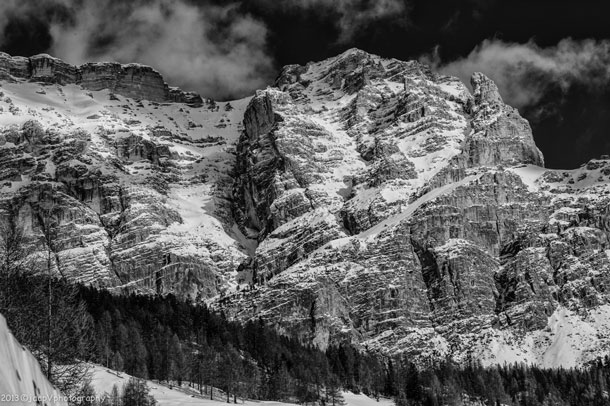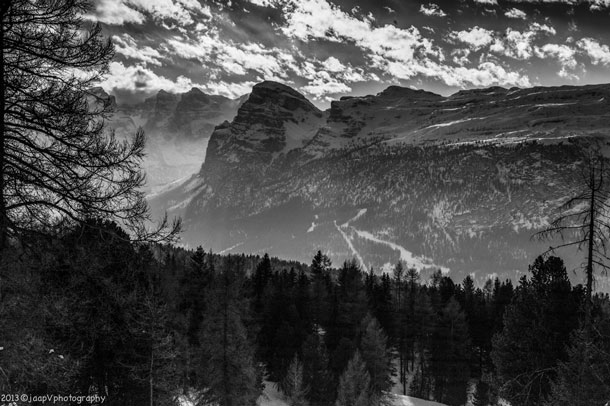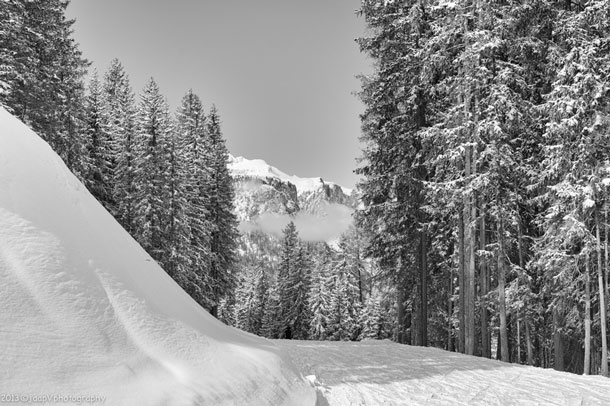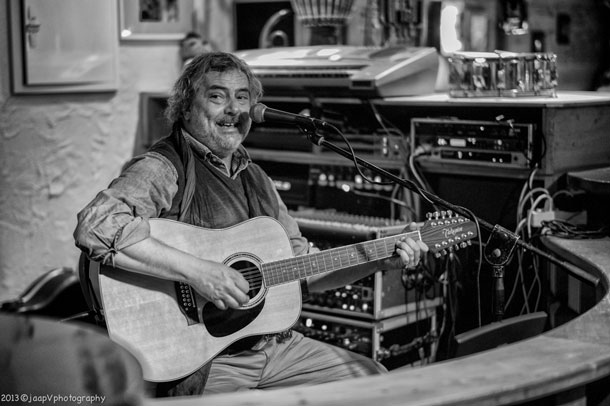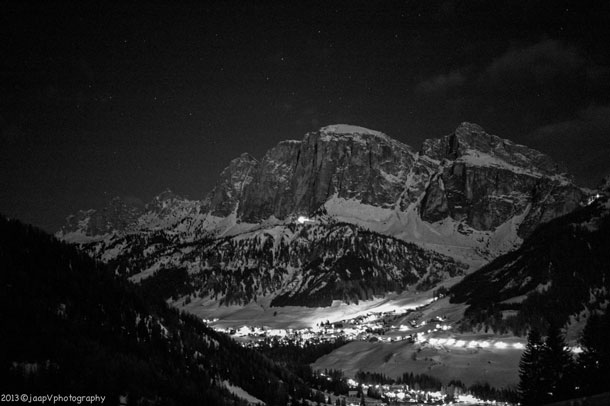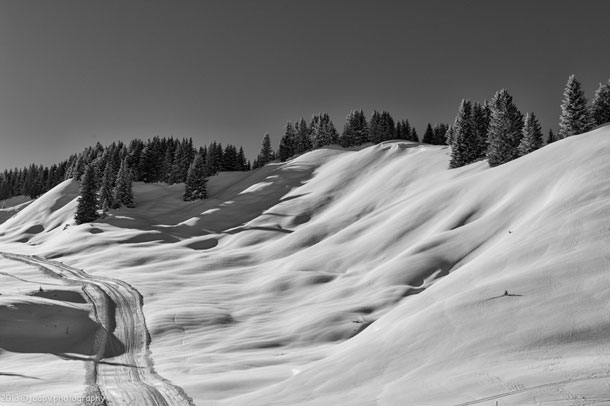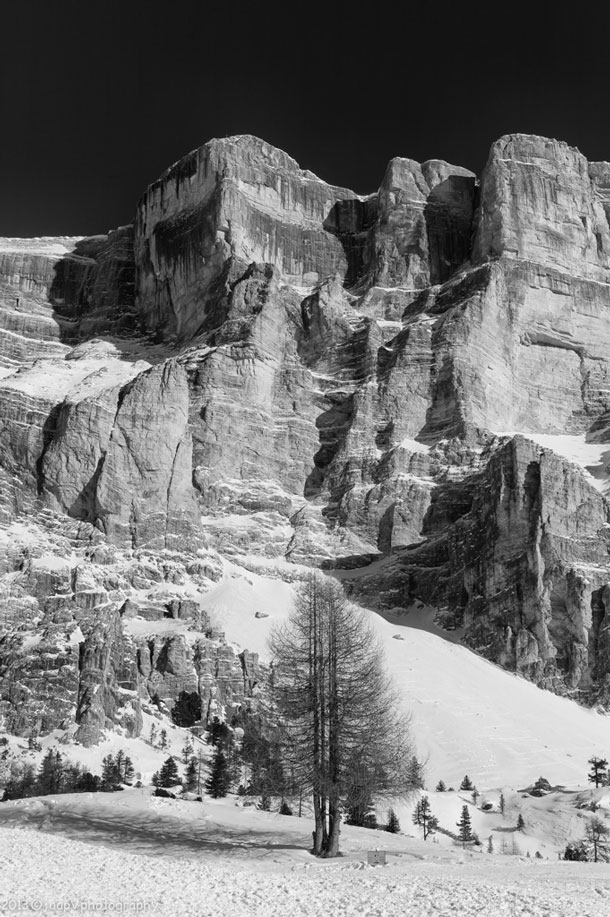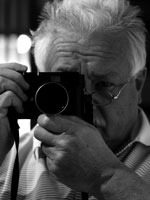
“Die Leica in der Hand”… When Dr. Paul Wolff coined the phrase in the early 1930s, Leica was the camera of choice for travel photography. Small, light, high quality imagery, robust, what better tool to take out into the mountains skiing or hiking? Leica even brought out a special lens for the purpose, the Mountain Elmar 105/6.3.
So one could see photographers like the good doctor in the Alps with their Leica II f and although there is considerable doubt that he took his famous skiing photographs with the Leica (several sources suggest that he used stills from a 16mm movie camera), the mountain images he produced were quite popular.
Fast forward to today — tourism in the Alps has shifted from an elite hobby to large resorts, the cameras on the slopes and hiking trails are cell phones and small compacts, but the landscape is still there and the best way to explore the landscape is still on skis or walking.
Does it make sense to take a rangefinder camera these days? And a black and white one at that?
I headed into the Dolomites to find out, taking my M9 and Monochrom and a fairly limited selection of lenses. In the end it turned out that my intention of making a fair division between black and white and color came to nothing — the M9 remained in the hotel room for 95% of the time…
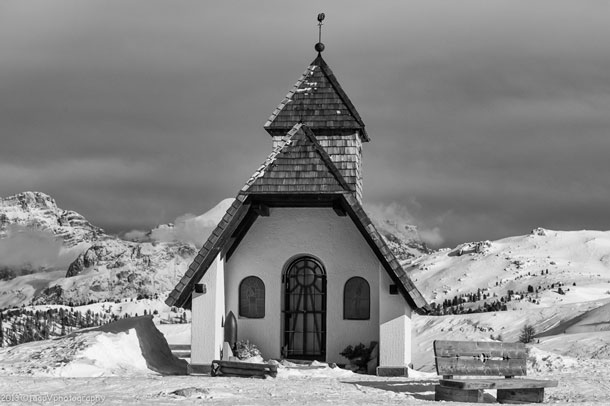
Skiing and mountaineering has some obstacles for a digital rangefinder camera, amongst them bangs and bumps and low temperatures. For me the advantages outweigh the disadvantages: portability, ease of use with gloves (though not with skiing gloves), superior image quality (especially for vast landscapes) and build quality.
I used a bum-bag type of camera case, the LowePro Orion Mini — which, I fear, is out of production — to hold the camera with a Summilux 50/1.4 ASPH, a Zeiss Tessar 85/4.0 and a Canon 35/2.8 (a 1954 lens). Plus odds and ends like batteries, filters my spectales, etc.
Most image were taken with the Summilux.
There were no problems with the camera, despite some vigorous skiing, and although temperatures were sometimes as low as minus 18°C, it only froze up once, which a quick battery change solved.
In fact the best accessory were battery-heated gloves, to keep the feeling in my fingers for focussing and button-pushing.
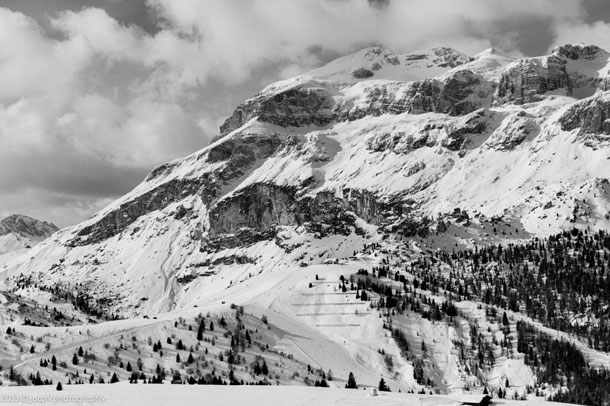
The harsh light in the mountains calls for some juggling with exposure to avoid blowing out the white snow. Not that that is necessarily a bad thing, as it can be a featureless white which can only be rendered as such, but the structures and nuances make for the most interesting photographs, and the Monochrom is an excellent tool to capture even the most subtle grey shade.
The raw histogram and adjustable clipping warning are very helpful in these high contrast conditions.
At night, in the restaurant or bar, the high ISO performance is a blessing and the form factor of the camera helps to be unobtrusive.
Filters are of course needed if one wants to tweak the tonal response of the camera, and in the clear air of the Alps a yellow filter is the least one needs. I like the dark skies of stronger filtering, so mostly I used orange or even sometimes red for really dramatic effects. All in all I am happy with the results.
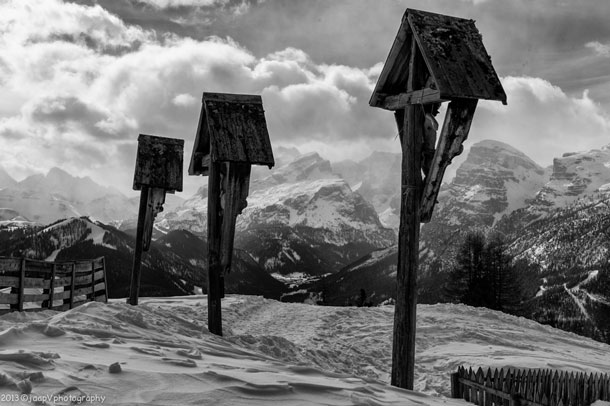
This is a report on the Monochrom as a travel camera, so for post-processing I restricted myself to a little Macbook Air 11” with Lightroom 4 and Silver Efex Pro. The files are only minimally worked; set the histogram in LR, switch to LR4 mostly with preset 006, and tweak the sliders in LR, crop and export. Maybe two minutes per photo. When I checked on my main system at home, I felt no need for further tweaks.
As for action photography on skis, I guess we will have to follow in the tracks of Dr. Wolff and wait for the Leica M with its video facility. I hope we will be able to pull decent shots from the video. At least it will take longer lenses and will be faster.
My conclusion: taking the Monochrom as a travel and landscape camera can be recommended, even or especially in snow when one would expect blown out highlights.
Maybe a black-and-white only camera is the ideal tool for snowbound, black-and-whitish landscape.
+++ You can order the Leica M Monochrom from Amazon, B&H or Adorama.
For any questions on the Leica Monochrom and photography, Jaap Vleeskruijer can be contacted through his website www.jaapvphotography.eu.
